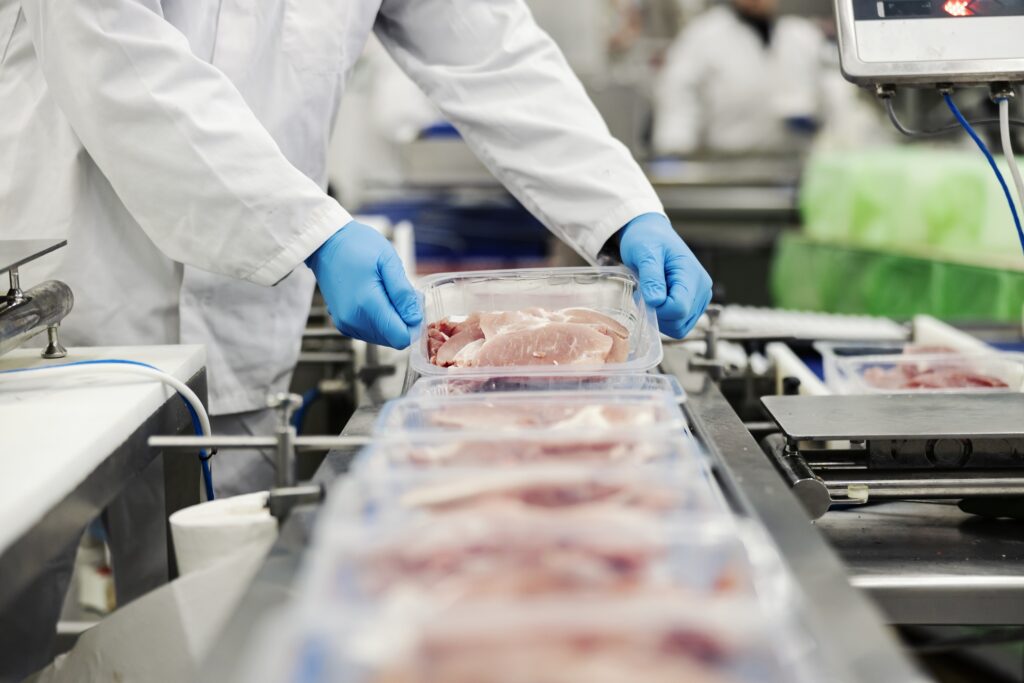In the complexity of the global food supply chain, the meat and protein sector stands out as a critical segment. It provides sustenance for billions while navigating a complex web of challenges. From production, disassembly, processing and blending, to distribution and consumption, each step in the meat and animal protein supply chain poses unique planning challenges that demand strategic solutions.
Strategic planning in meat supply chains
The industry outlook for the meat and protein sector reflects the same complexities. From inflation, to growing choices for non-meat products, there are many different trends (as described in this example article from NielsonIQ) that will impact how producers will be able to satisfy consumer demand.
Our eBook “The Fully Connected Meat Supply Chain” explores the unique challenges of protein companies. By imagining what an integrated supply chain should look like, and the utilization of key technology, it is possible to see how to utilize end-to-end strategies, overcome the challenges and maximize value.

Deliver end-to-end efficiency
Since many companies still operate in functional silos of people and information, it is difficult to make informed decisions that successfully support broad organizational goals. Lack of collaboration is holding back meat processors from fulfilling their production potential and maximizing their profitability. A fully connected supply chain delivers efficiency end to end, and provides planners the decision making support they need to help the company realize its business goals.
Developing optimal plans efficiently is essential to providing agility and resiliency to address disruption and maintain cost effective operations that maintain customer service and quality. However, beyond business metrics, the connected supply chain also needs to be adaptable to the needs of humans and animals alike. As such, to build a resilient supply chain you need to take into account the following factors:
– Customer preferences for choice, price and availability
– Food health & safety concerns
– Workforce safety and scheduling in high speed production environments
– Animal welfare and the traceability and transparency of the supply chain
We need to examine many connected processes in order to improve efficiency, boost productivity and reduce wastage. These vary greatly in terms of scope from strategic Sales & Operations Planning, Master Production Scheduling, Detailed Scheduling and Production Execution. Since the protein industry is low-margin and high-volume, mistakes can happen quickly and be expensive. Therefore, we need to orchestrate each of these processes to propagate real-time updates between various levels of decision-making and align stakeholders.

To create plans for each process in the supply chain, planning teams need data such as demand forecasts, raw material supply, processing capacity, freezer space availability and stock outflow. Lack of information results in poor plans that cause bottlenecks in processing, warehousing and shelf-life planning. Planning using one system brings demand, supply and inventory planning onto a single platform, which offers visibility across your supply chain. In this way, planners will have the answers to questions such as:
– What to produce to fulfill SLAs?
– How much to keep?
– How much buffer to produce for?
Only the integration of DELMIA’s planning solution with Manufacturing Operations Management (MOM) gives your team access to information and visibility of your company’s entire global operations and let you harness real-time insights for yield optimization.
Boost productivity in the meat industry
The meat and protein supply chain is a complex ecosystem that demands careful planning. This is necessary to overcome challenges related to efficiencies, quality assurance, and technological integration. Companies need to embrace innovation, stay abreast of industry trends, and foster collaboration among stakeholders. The results is a resilient and sustainable supply chain that meets the growing demands of a dynamic global market. As the meat industry navigates the path from farm to fork, strategic planning remains the key ingredient for success.
Please read our eBook “The fully connected meat supply chain” for more information.

